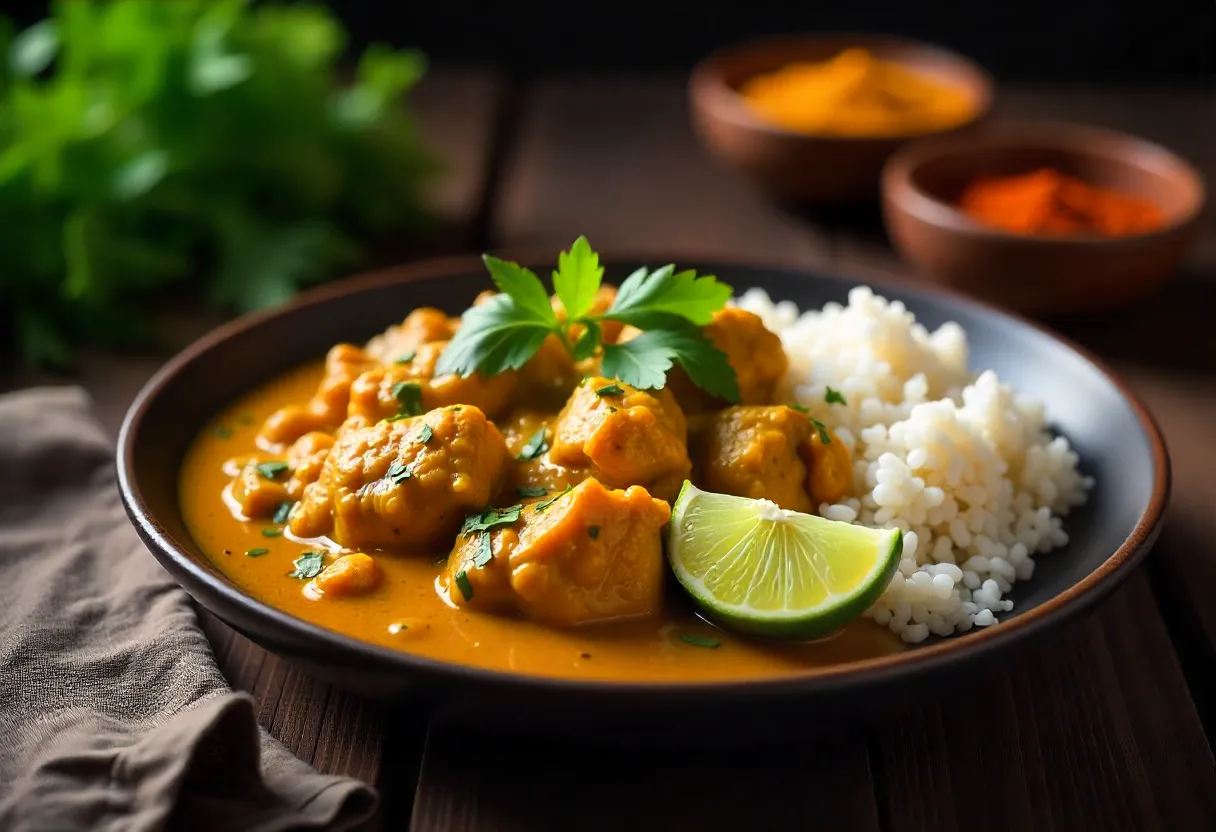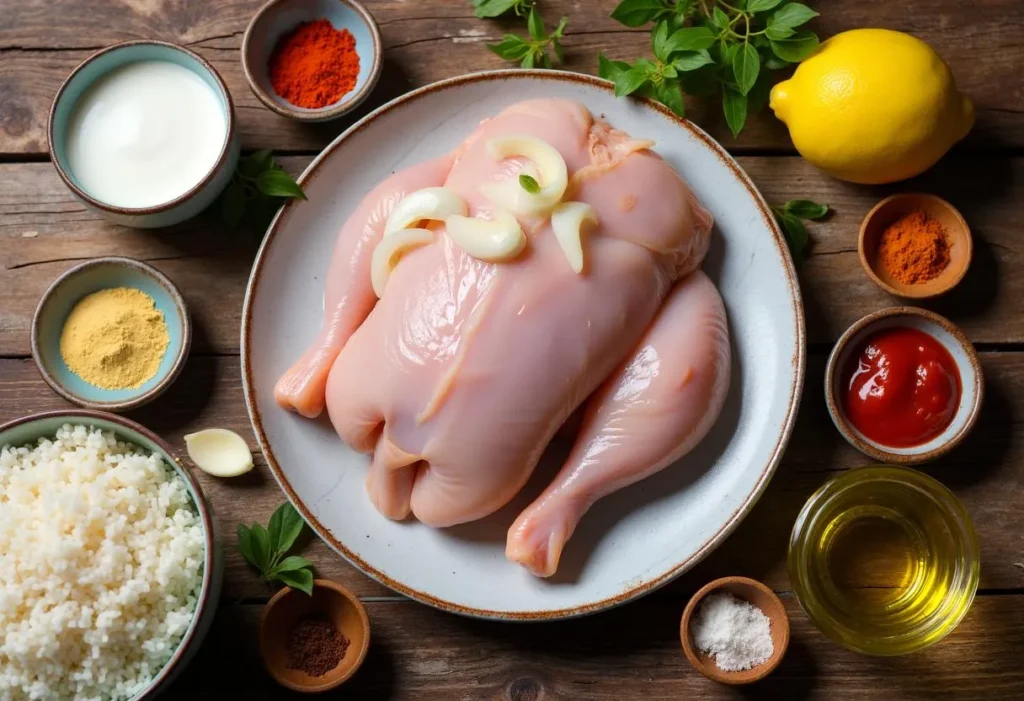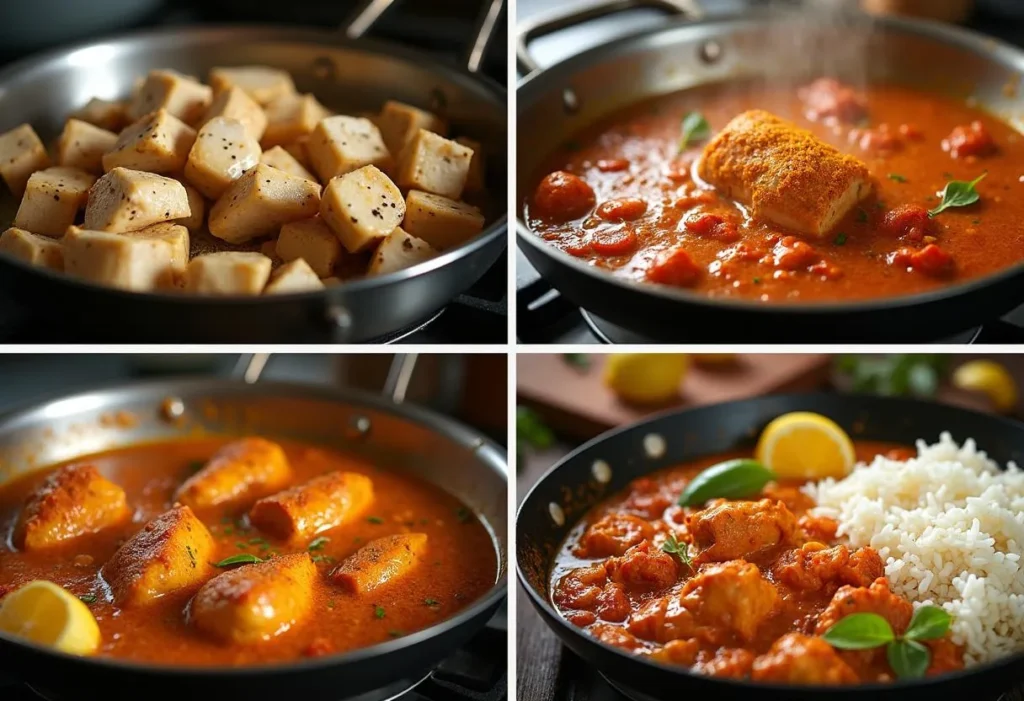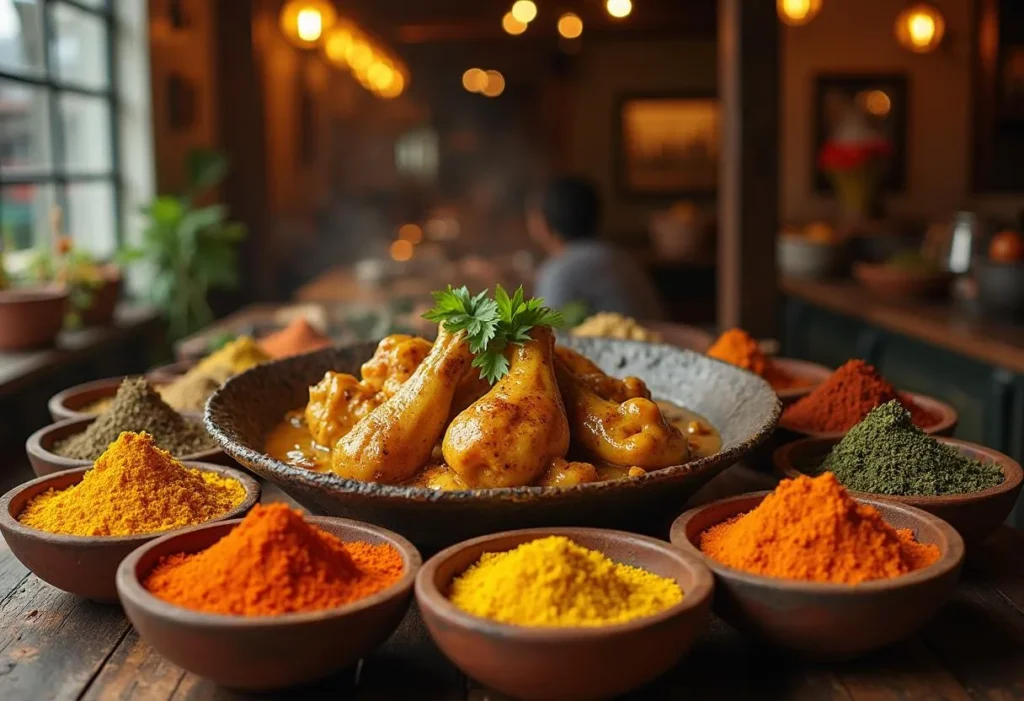
Curry is a hearty, fragrant dish made from stewed vegetables, legumes, or meat, enriched with a blend of spices that give it depth and warmth. The spice mix known as “curry” isn’t a single spice, but rather a carefully balanced combination of turmeric, coriander, cumin, pepper, fennel, ginger, cloves, and other aromatics. Much like khmeli-suneli in Georgian cuisine, it unites different spices into one harmonious flavour. Traditionally, curry is served with steamed rice, creating a meal that is flavourful, juicy, and satisfying — perfect for a cozy family lunch or dinner.
For a long time, I assumed making curry was a complicated process reserved for experienced cooks. But then I came across food blogger Oblomoff, who demonstrated that this dish can actually be made simply and affordably with everyday ingredients. Inspired, I decided to recreate his version — and it turned out to be an easy yet unforgettable addition to my table.
🥘 Ingredients

- 250 g onion
- 600 g chicken fillet
- 3–4 garlic cloves
- 1 tbsp tomato paste
- 500 ml heavy cream (20–22% fat)
- 1 heaping tbsp curry spice mix
- Salt and black pepper to taste
- Olive oil for frying
- 40 g butter for frying
- Rice and lime for serving (I used lemon instead)
👩🍳 Method of Preparation

1. Preparing the Chicken
The chicken fillet is rinsed, patted dry with paper towels, and cut into medium-sized cubes. The pieces are seasoned with salt and black pepper, then seared in a hot pan with olive oil.
👉 As Oblomoff recommends, the chicken should not be stirred too often — turning it every two minutes allows the meat to form a golden crust instead of releasing moisture and steaming.
2. Cooking the Onions and Garlic
While the chicken browns, onions and garlic are sliced into thin pieces. Thanks to the quantity of onion used, it softens completely and blends into the sauce during cooking.
Once the chicken has turned golden, it is set aside in a bowl. Butter is then added to the same pan, followed by the sliced onions. They are sautéed until golden and fragrant. Garlic is added next and cooked for about two minutes.
3. Adding Flavor
Tomato paste is stirred into the onions and garlic, fried for about two minutes until aromatic. Curry powder is then sprinkled over the vegetables, releasing its deep, warm fragrance.
4. Making the Sauce
Cream is poured into the pan, and everything is mixed until smooth. After a couple of minutes, the chicken is returned to the pan. The dish simmers gently for about five minutes, allowing the meat to soak up the curry flavors while the sauce thickens to a silky consistency.
5. Cooking the Rice
At the same time, water for rice is set to boil. Boil-in-bag rice is cooked for 20–25 minutes after boiling, which aligns perfectly with the curry preparation.
6. Serving
The finished curry yields four hearty portions. It is served with rice and a slice of lemon (or lime, if available).
Looking for more curry recipes — and many other flavourful dishes? 🌿Visit culinary blog 👉 BookOfFoods.com for inspiration, step-by-step guides, and delicious ideas to bring variety to your table.
Chicken Curry History

Chicken curry with rice and vegetables is often thought of as a classic Indian dish, deeply connected with the East. Surprisingly, the word “curry” itself doesn’t actually exist in India — it was coined by the British!
The term comes from the Tamil word “kari”, meaning “sauce.” Over time, any meat, fish, or vegetables cooked in a spiced sauce began to be called curry. In the 19th century, curry houses — restaurants specializing in Indian cuisine — began appearing across the UK, where they remain popular today. The British are also credited with creating the universal “curry powder” blend.
These spice mixes first appeared in London in the 18th century, aimed at travelers returning from India. Spices were valued not only for their flavor but also for their preservative and antibacterial qualities. Typical blends included turmeric, fenugreek, coriander, cumin, and black pepper.
For Indians themselves, however, standardised spice blends were unusual. Each region — and often each household — created its own aromatic mix, shaped by lifestyle and religious traditions. Some avoided pork, others avoided beef, and vegetarians relied on legumes, vegetables, and tomatoes.
In India, there are hundreds, even thousands, of curry variations. Street vendors and home cooks alike prepare their own unique versions, often combining 20–30 spices for the perfect balance. In Europe, this concept was simplified into the familiar “curry powder.” But regardless of the recipe, the heart of curry lies in its bold aroma and harmony of spices.

Share this Story
